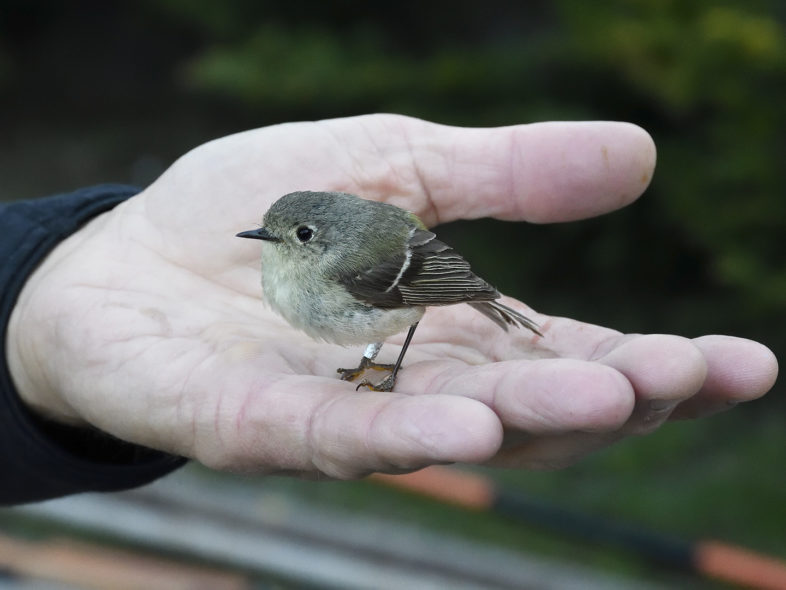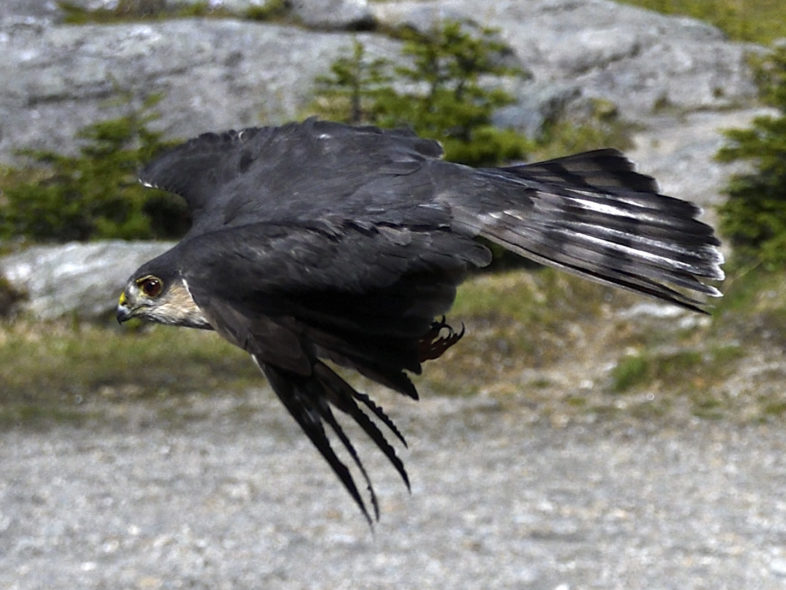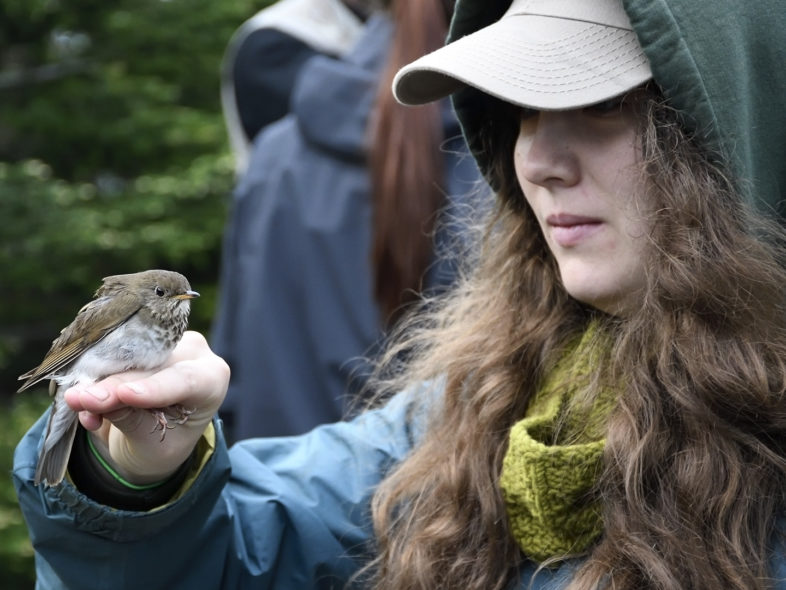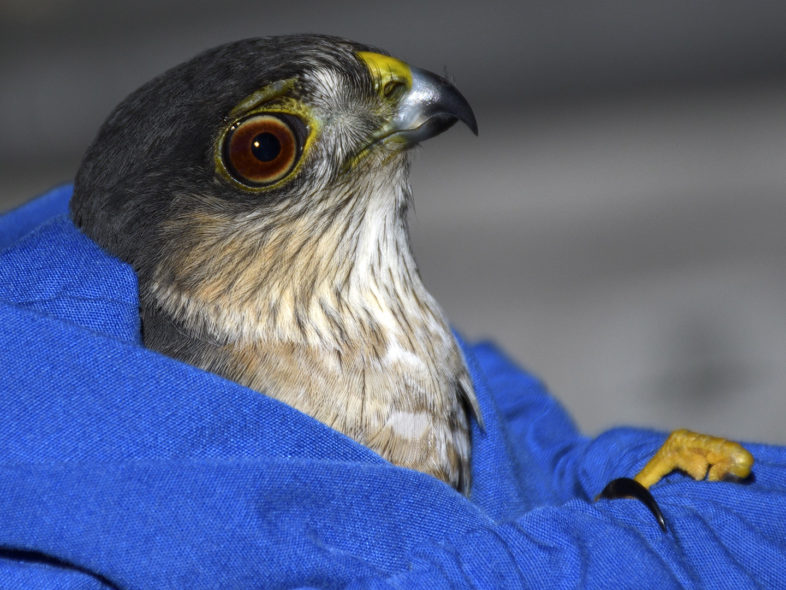
A banded female Ruby-crowned Kinglet takes a moment to think about life before flying off. Mt. Mansfield, 7 June 2019. © Michael Sargent
Two weeks into VCE’s 28th consecutive field season of studying Mt. Mansfield’s breeding birds, the question on everyone’s mind is “where are they?”. Our first two 2019 visits to VCE’s long-term ridgeline study site have revealed disconcertingly low numbers of all species, as assessed by vocal or visual encounters and mist net captures. After spring’s persistently cold and wet weather, we might expect the phenology of leaf-out, insect emergence and avian nesting to be behind schedule—and that seems to be the case, with pockets of snow still clinging in shaded spots. What we don’t yet know is whether local bird populations are actually reduced from “normal” (an increasingly elusive concept), or whether activity levels are simply low.
After the past two weeks’ sessions of mist netting and banding, both under conditions less than ideal but far from dismal, we have captured only 34% of our total at this time a year ago (57 birds so far in 2019, 168 through 6/12/18). Granted, weather enabled us to put in more netting effort a year ago, but the difference has been striking, especially in that we just haven’t seen or heard many birds on the ridgeline this June. Even White-throated Sparrows, which normally fill the montane air space with their sweet songs, have been subdued. We’ve not heard or seen a Swainson’s Thrush (though netted 2), while the dawn and dusk Bicknell’s Thrush chorus has been notably uninspired. It’s far too early to sound an alarm, but it seems that fewer birds are present this June.
The good news, of course, is that we’ve launched season #28, that we’re catching both new and returning birds, and that most common species are nesting (with at least some females showing incubation patches). We’ve had a few nice surprises—including a male Sharp-shinned Hawk that we banded last June 27—and the season is still young.

A male Sharp-shinned Hawk (originally banded on 27 June 2018) makes a beeline for the krummholz after being released from the VCE banding station. Mt. Mansfield, 7 June 2019. © Michael Sargent
Among the 57 birds we netted on June 6-7 and 12-13:
Sharp-shinned Hawk 1 — return ASY male banded on 6-27-18
Yellow-bellied Flycatcher 1— unknown sex
Winter Wren 2 — 1 new male, 1 new female with incubation/brood patch
Ruby-crowned Kinglet 1 female
Bicknell’s Thrush 16 — 6 new (3 males, 1 female, 2 unknown sex), 10 returns (7 males, 3 females) from previous years (1 from 2014, 4 from 2016, 3 from 2017, 2 from 2018)
Swainson’s Thrush 2 — 1 new male, 1 return female from 2016
American Robin 1 — return male from 2017
Dark-eyed Junco (Slate-colored) 2 — 1 return male from 2017, 1 new female with full incubation/brood patch
White-throated Sparrow 6 — 3 new males, 1 new female, 1 unknown sex, 1 return male from 2017
Blackpoll Warbler 13 — 9 new, 5 returns (including a female from 2014!)
Yellow-rumped Warbler (Myrtle) 9 — 7 new, 3 returns

VCE’s 2019 Alexander Dickey Conservation Intern Rose West holding her first Bicknell’s Thrush. Mt. Mansfield, 13 June 2019.© Michael Sargent.
The next two weeks should reveal much more about the Mansfield ridgeline’s 2019 breeding bird community. My instincts tell me that activity will pick up—that we’ll hear more vocalizing and capture more birds in our nets—but that numbers are in fact lower than they were a year ago. The near-absence of Swainson’s Thrushes makes me wonder if some individuals have shifted to lower elevations, whether temporarily or as a season-long strategy in response to our recent weather. Stay tuned…

A male Sharp-shinned Hawk casts a baleful glance prior to being removed from a bird bag for measurements and weighing. Mt. Mansfield, 7 June 2019. © Michael Sargent

Great work you all do! Thanks
Interesting report and great photos. Thank you!